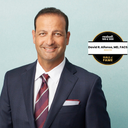Posted underBreast Implants q&a
In breast augmentation, in general terms, does 100cc or 200cc equal 1 cup size? (Photo)
Some doctors opine that 100cc is a general guideline for increasing 1 cup size, while others suggest that 200cc's is the guideline. I understand that using sizers to determine what size you are comfortable with is most important, but still, I'm curious about the discrepancy. I am planning a minor increase (34A to B) and have been sized with 150cc, of which I understand I will lose at least 50cc's by going under the bone, leaving me with 100cc of increase. Thank you.
Answers (27)
From board-certified doctors and trusted medical professionals
More Breast Implants Questions
See all Breast Implants Q&AWE SEND PRETTY
EMAILS
What’s trending? Who’s turning heads? Which TikTok myths need busting? We’ve got you. No fluff, no gatekeeping—just real talk. Get our free, unfiltered newsletter.









